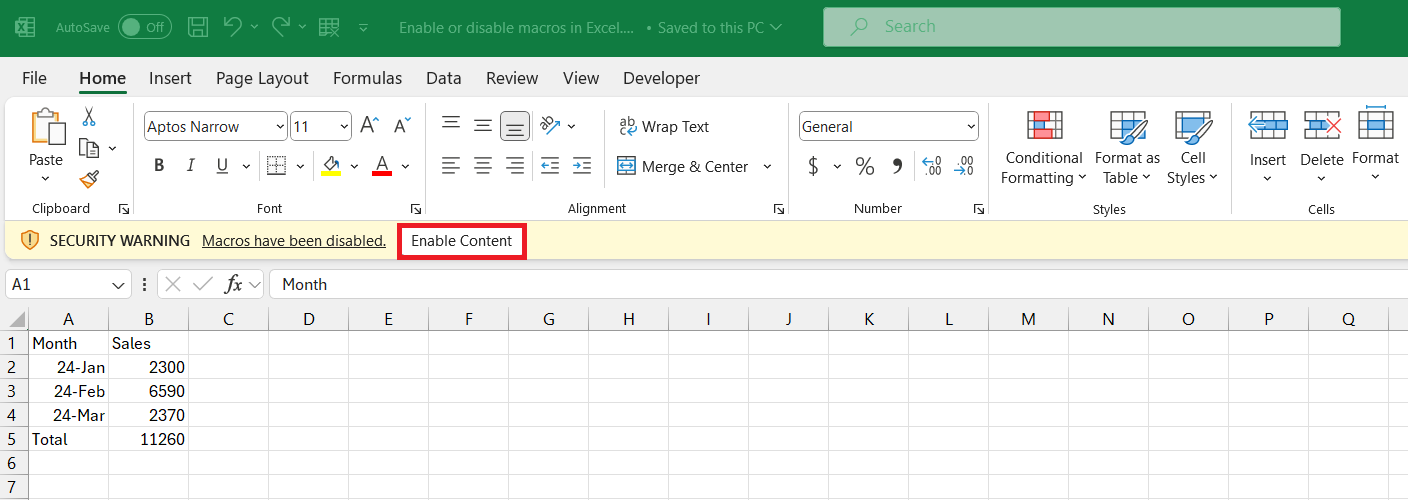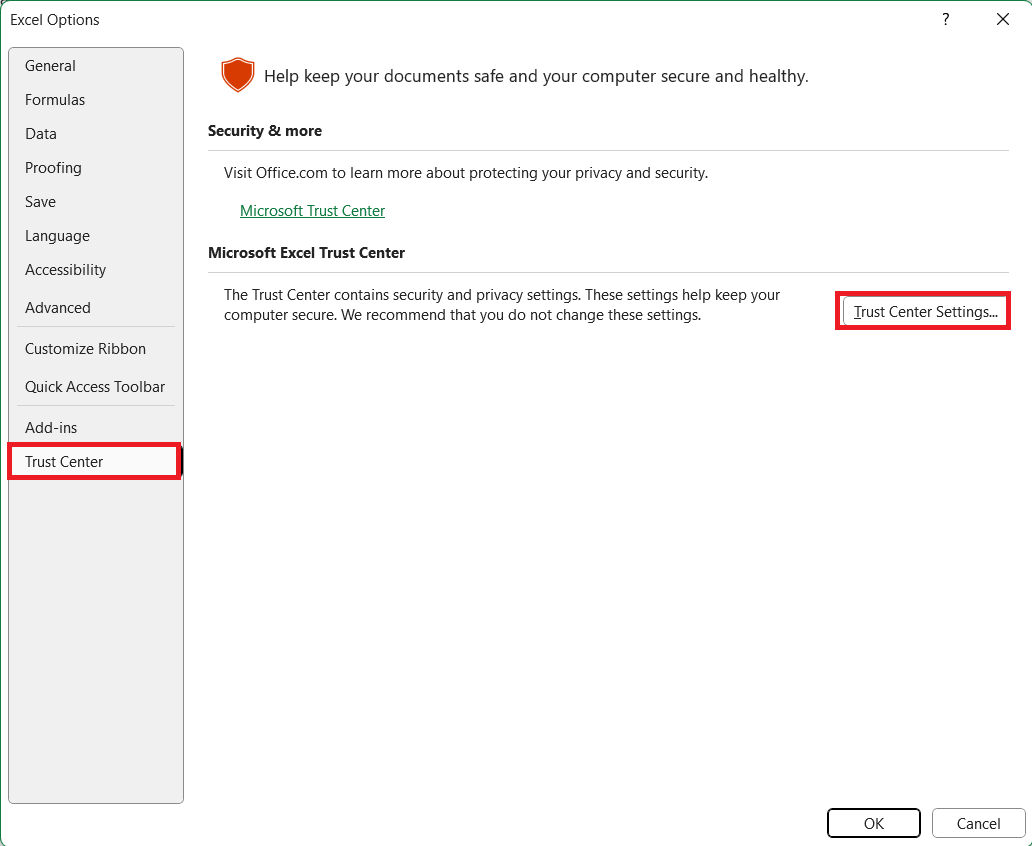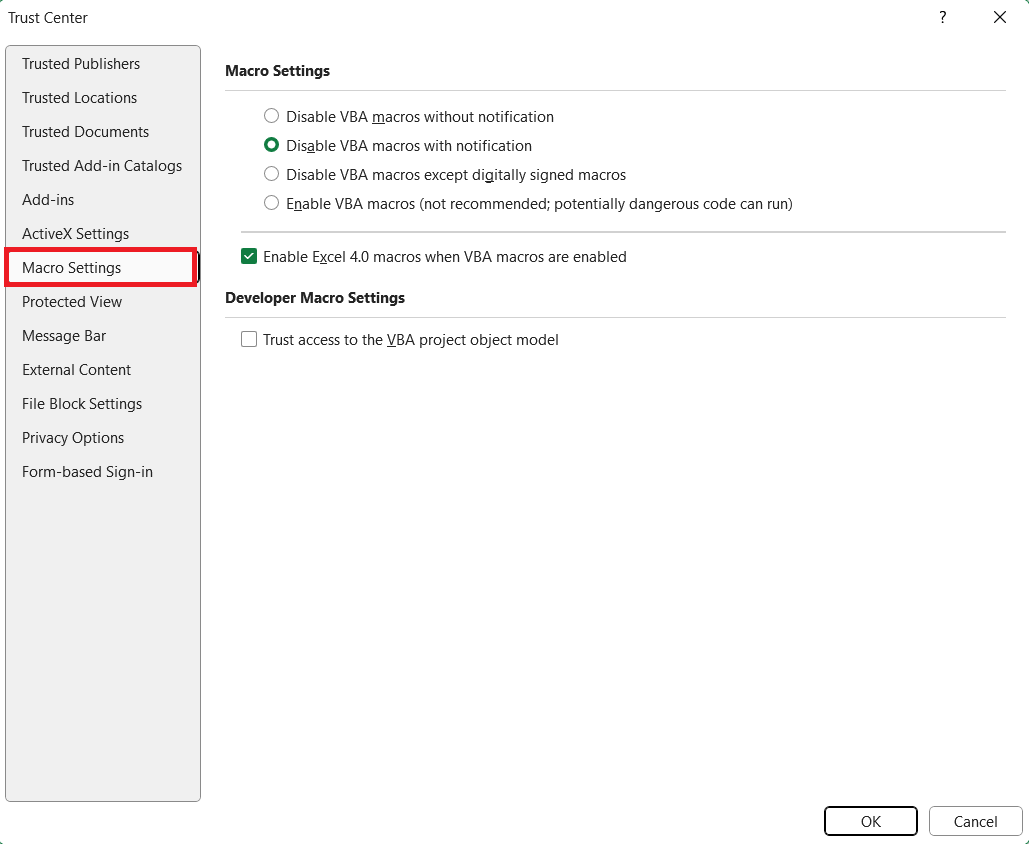Key Takeaways
- Macros are disabled in Excel by default to protect you from potentially harmful code.
- You can activate macros in Excel using the Trust Center and by enabling them for specific files.
- Always ensure you trust the source before enabling macros.
- There are different macro settings: disable all, disable with notification, enable all, and trusted locations.
- Using macros opens up advanced automation possibilities, including custom functions and automated workflows.
Table of Contents
What Are Macros and Why Activate Macros?
A macro in Excel is a set of instructions that automate tasks, usually recorded or written in VBA (Visual Basic for Applications). With macros, you can automate anything from formatting data, cleaning up sheets, to running complex calculations with a single click. Because macros can modify or delete data, Excel disables them by default for security.
Activating macros allows you to take full advantage of Excel’s automation capabilities. Whether you want to streamline monthly reports or build interactive dashboards, macros are essential for power users.
Step-by-Step: How to Activate Macros in Excel
Method 1: Enable Macros for a Single Workbook
Open your workbook. If macros are present, a yellow security warning bar will appear near the top.
Click “Enable Content”. This will activate macros for this session.
This method is best for files from trusted sources that you do not use often.
Method 2: Change Global Macro Settings
Go to File > Options.
Select Trust Center on the left pane.
Click Trust Center Settings…
Select Macro Settings.
Choose your preferred setting:
- Disable all macros without notification
- Disable all macros with notification (recommended)
- Disable all macros except digitally signed macros
- Enable all macros (not recommended)
Click OK to apply your changes.
For most users, “Disable all macros with notification” is a good balance between security and usability.
Common Mistakes or Tips
Enabling macros in unknown files: Only enable macros in files from trusted sources. Malicious macros can harm your system or steal data.
Not saving as a macro-enabled file: Macros only work in files with .xlsm, .xlsb, or .xls extensions. If you save as .xlsx, all macros are removed.
Forgetting to update macro settings after Excel updates: Major Excel updates may reset some settings. If macros stop working, check your Trust Center settings again.
Assuming all macros are safe: Even if you receive a file from a colleague, verify the contents before enabling macros.
Bonus Tips & Advanced Scenarios
Daylight Savings Logic: Automate time adjustments using a VBA macro that adds or subtracts an hour based on date ranges.
Power Query + Macros: Use macros to trigger Power Query refreshes automatically, or to post-process query results.
Custom VBA Function: You can create your own Excel functions using VBA and use them just like built-in functions.
Use Cases for Activating Macros
Data Cleaning: Automate removing duplicates, formatting numbers, and standardizing column headers.
Monthly Reports: Use macros to generate and format reports with a single click.
Task Automation: Automate complex workflows such as importing, processing, and exporting data.
Custom User Forms: Build interactive forms that gather and validate input, then update sheets automatically.
Bulk Email Sending: Automate sending personalized emails to a list of recipients from Excel.
FAQ
Q: Why are macros disabled in Excel by default?
A: Macros can contain harmful code, so Excel disables them to protect you from viruses and data loss.
Q: Can I enable macros for just one file instead of all files?
A: Yes, use the “Enable Content” button in the yellow security bar or add the file location to Trusted Locations.
Q: What file types support macros?
A: Macros require .xlsm, .xlsb, or .xls file types. .xlsx files do not support macros.
Q: Is it safe to enable macros from unknown sources?
A: No, only enable macros in files from sources you trust.
Q: How do I access or edit the macro code?
A: Go to the Developer tab and click Visual Basic to view and edit VBA code for your macros.
John Michaloudis is a former accountant and finance analyst at General Electric, a Microsoft MVP since 2020, an Amazon #1 bestselling author of 4 Microsoft Excel books and teacher of Microsoft Excel & Office over at his flagship MyExcelOnline Academy Online Course.











